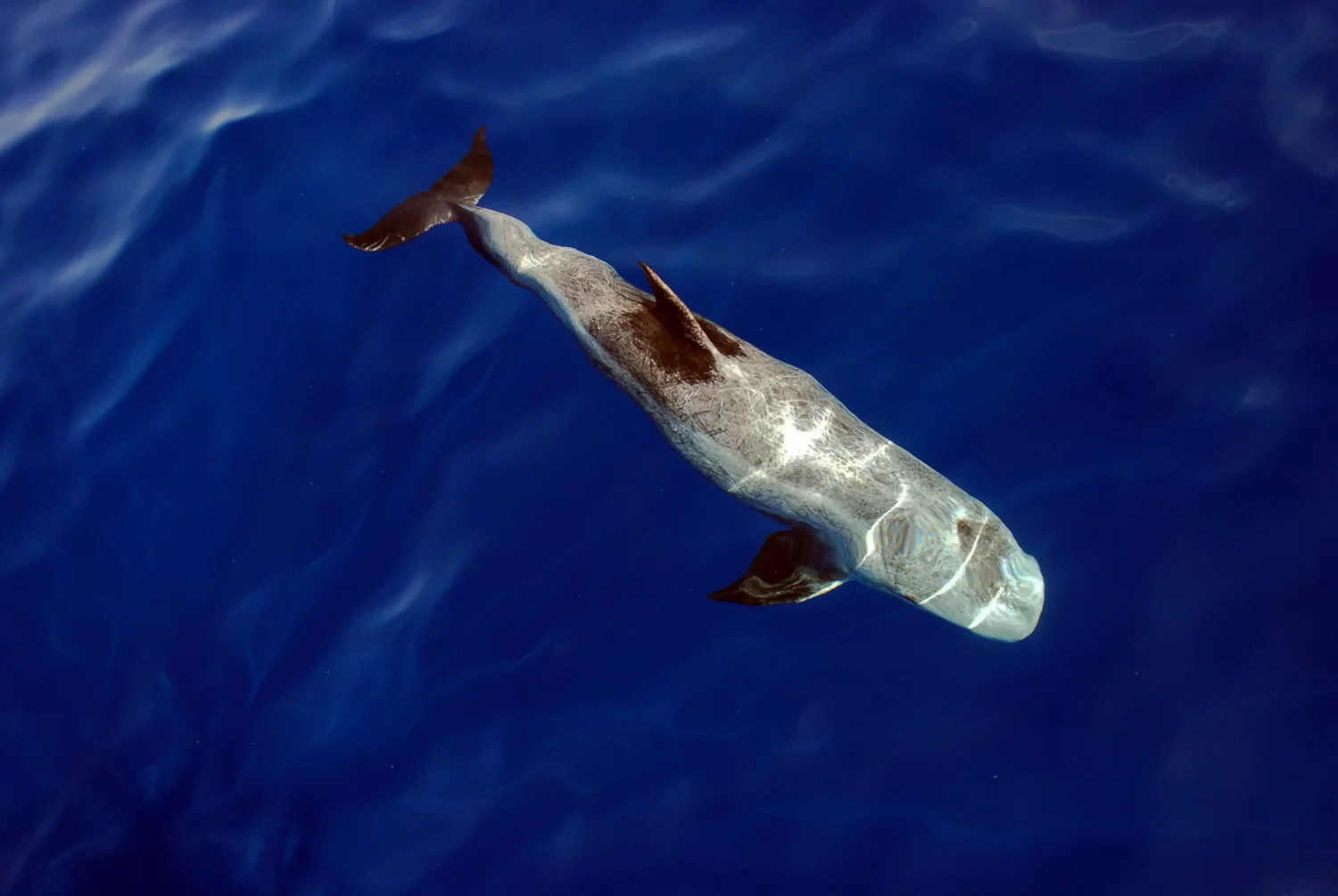Habitat Directive: Annex IV. MED Conservation Status: Unfavourable-Bad
IUCN Red List: Least concern (LC), there are not abudance estimates globally, but only in specific areas. The Mediterranean sub-population was recently defined as ‘Endangered’ (EN). Indeed, signs of population decline was detected in the seas of the basin.
Sighting possibilities
It is a cosmopolitics species distributed in tropical and warm temperate seas. In the Mediterranean, it can be sighted throughout the basin, but it is primarily found in the Alboran Seas, the Balearics, the Côte d’Azur-Ligurian-Provençal Basin and the western Aegean. In Italy, it is present in the southern Tyrrhenian and Ionian Seas. In Sicily, there have been several sightings of the species at the Egadi Islands, in the Strait of Messina and on the Ionian coast. It suffered a drastic decline in recent years even in areas where it was historically frequently sighted. It lives primarily in deep water and, looking for food, it reaches underwater canyons, slopes and areas with accentuated seabed where zooplankton accumulates, conditions that attract a considerable variety of cephalopods.
How to recognise it at sea
Sizes: 3-4 meters of length, 500-600 kilograms of weight. Males have slightly greater extent compared to females. Its livery makes it unmistakable compared to all other delphinids. It is dark grey but has numerous white scars, especially on the back and sides of the body, fights result with its conspecifics and wounds caused by the squids it feeds on. The poor pigmentation of the damaged tissues therefore gives it its characteristic ‘shaded’ white-grey colouration. The head is globose and lacks a rostrum, the dorsal fin is high, falcate and in a median position. The blowhole is crescent-shaped and very wide.
Biological notes
It is an odontocete cetacean belonging to the family Delphinidae. It feeds mainly on cephalopods (especially squid) but, in their absence, also on fish. It lives in large groups of around 30 individuals, although sometimes up to 100 individuals have been observed together. Males and females reach sexual maturity at around 7 years of age and, after mating, gestation lasts 13-14 months. Its reproductive life is not really known, it is assumed that births occur during the warmer months and that the young measure just over 1 metre. The sturgeon can live more than 40 years. Individuals form stable long-term bonds, with a social structure stratified by age and sex classes, with strong associations between adult males and adult females.
They produce a wide range of vocalisations with frequencies between 30 Hz and 22 kHz, including broadband clicks, stereotyped vocalisations (pulse-burst), low-frequency narrowband sounds (grunts and chirps) and whistles
Curiosities
- It is possible to recognize older specimens because they are much lighter than younger ones and have more scars
- Like other Odontocetes, it communicates with its group through clicks and, more rarely, through short whistles, which it also uses for echolocation
- There is evidence that hybridisation between the grampus and the bottlenose dolphin is possible in the wild. Worldwide they are also found in association with other species, but in the Mediterranean it is uncommon.
- • It has no teeth in its jaw and has between two and seven pairs of peg-shaped teeth in its jaw, an unusual feature for delphinids. The teeth have little or no function for foraging, as the species, which specialises in cephalopods, swallows prey whole. It is assumed that they are mainly used in social interactions with conspecifics.
- • Like other delphinids, they sometimes emerge from the water (spy-hopping), revealing their entire head and body up to the fin for three seconds or more, as if observing their surroundings. A typical but still little-known behaviour of the species is to hold the tail vertically out of the water for several seconds, up to almost a minute, waving it.





